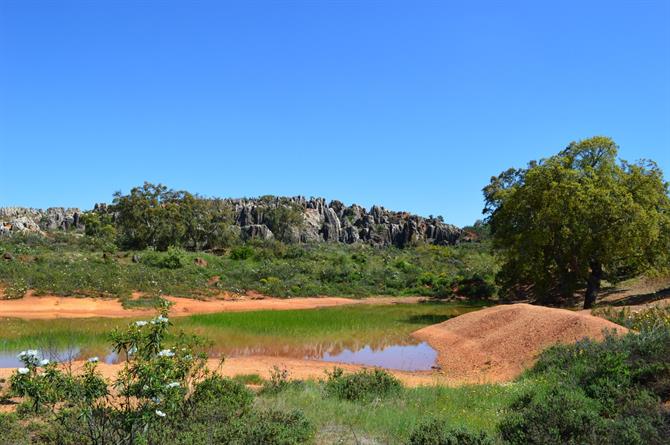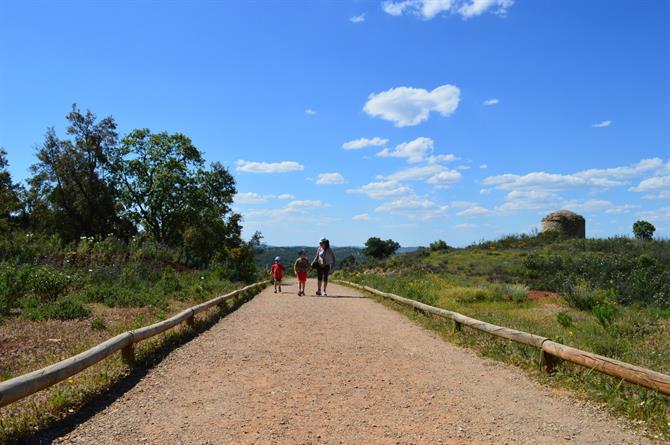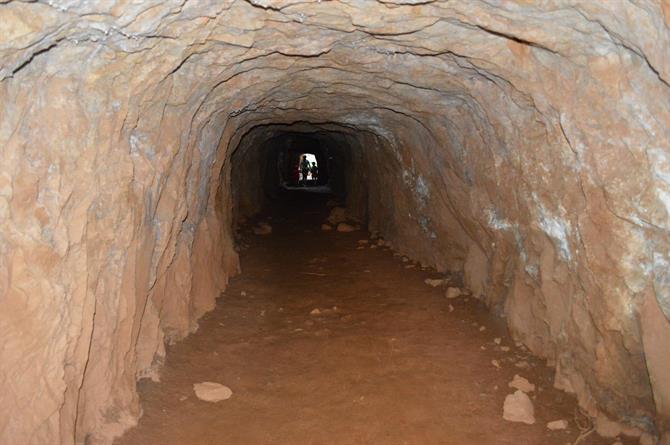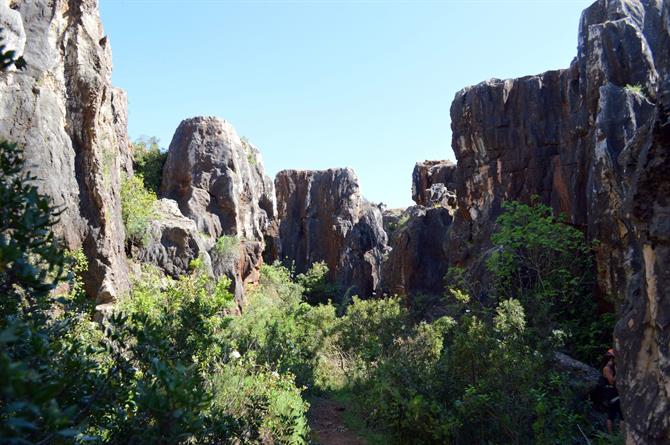Visiting the Cerro del Hierro mines

Visiting the mines makes a fantastic trip for the whole family. They are situated less than 10kms from the Cascadas del Huéznar and a visit to the two can be easily combined.
As they are the last stop on the Sierra Norte Greenway - the Via Verde - the mines are quite a popular destination.
People tend to cycle or walk in, have a quick look around and head back the way they came. Not unsurprisingly, as they still have a good 15 kms journey home.

What is less popular and is highly recommended is a 4.5 kms family walk through the mines. The walk is very easy to follow and clearly marked. If using a GPS you can download the track here.
Children, in particular, will love the route.
It goes through tunnels of varying lengths, passing through narrow passes with vertical walls on either side and huge chasms and gullies. Bring headlights if uncomfortable in the darkness.

Don’t veer off the path too much and unless very experienced do not explore the caves you’ll find on the way. People have got seriously lost in this area.
At a glance, the Cierro de Hierro appears similar in appearance to the El Torcal Karst landscape in Antequera, on closer inspection, it is very distinct. While the Karst formations in El Torcal appear very layered and almost ‘horizontal’ like, the limestone rock in Cierro Hierro is far more pronounced and jagged, offering plenty of pinnacles, needles and vertical walls.
Unsurprisingly, the area is a rock climbers paradise. There are numerous climbing routes on offer, around 120 in total, nearly all are bolted and clearly marked. They are of varying difficulty from IV to 7c.
History of the Cerro del Hierro
The mines have a history. A long one.
The limestone rock is particularly rich in iron ore and other minerals. Early records show that iron was first extracted before Romans times and the mines stayed operational right up to the middle of the 20th Century.

The mines were the first and most important stop for the old railway that used to run back to Seville’s port (now the Via Verde - greenway) They were the most important in the area. Some of Sevilla’s most iconic landmarks have been constructed using iron from the Cierro del Hierro mines, the Royal Tobacco Factory (now the University of Seville) and the Puente de Triana (Triana Bridge) on the Guadalquivir to name but two.
The old mining village where the workers lived is still known as Seville’s Siberia for its unforgivingly cold winters. Snow and frost are commonplace. Summers are actually far more bearable and cooler here. The height and the surrounding forests provide some form of protection against the hot winds that cause temperatures to rocket in the surrounding areas. It is said temperatures never really pass 30c in the summer months.
The mines were under the control of a Scottish mining company - William Baird and Co. Ltd from 1895. The typically English architecture is still visible today, with the engineers houses still known locally as the "Casas de los Ingleses".
Despite changing hands a couple of times, the mines were privately owned right up to 2000, when the Junta de Andalucia took over ownership and declared the whole area (363 hectares) a Monument of Natural importance.
Getting there
The Cerro del Hierro is located just off the road that runs between San Nicolás del Puerto and Constantina, the S-E163- Google map
The Sierra Norte de Sevilla's main visitor centre is located just after the village of Constantina. They can provide maps, hiking suggestions and details on all kinds of activities within the park, from horse riding to canoeing on El Pintado reservoir.
Opening hours are fairly erratic and depend on the time of year. Best to call first - +34 955 881 597 and/or check the website.
